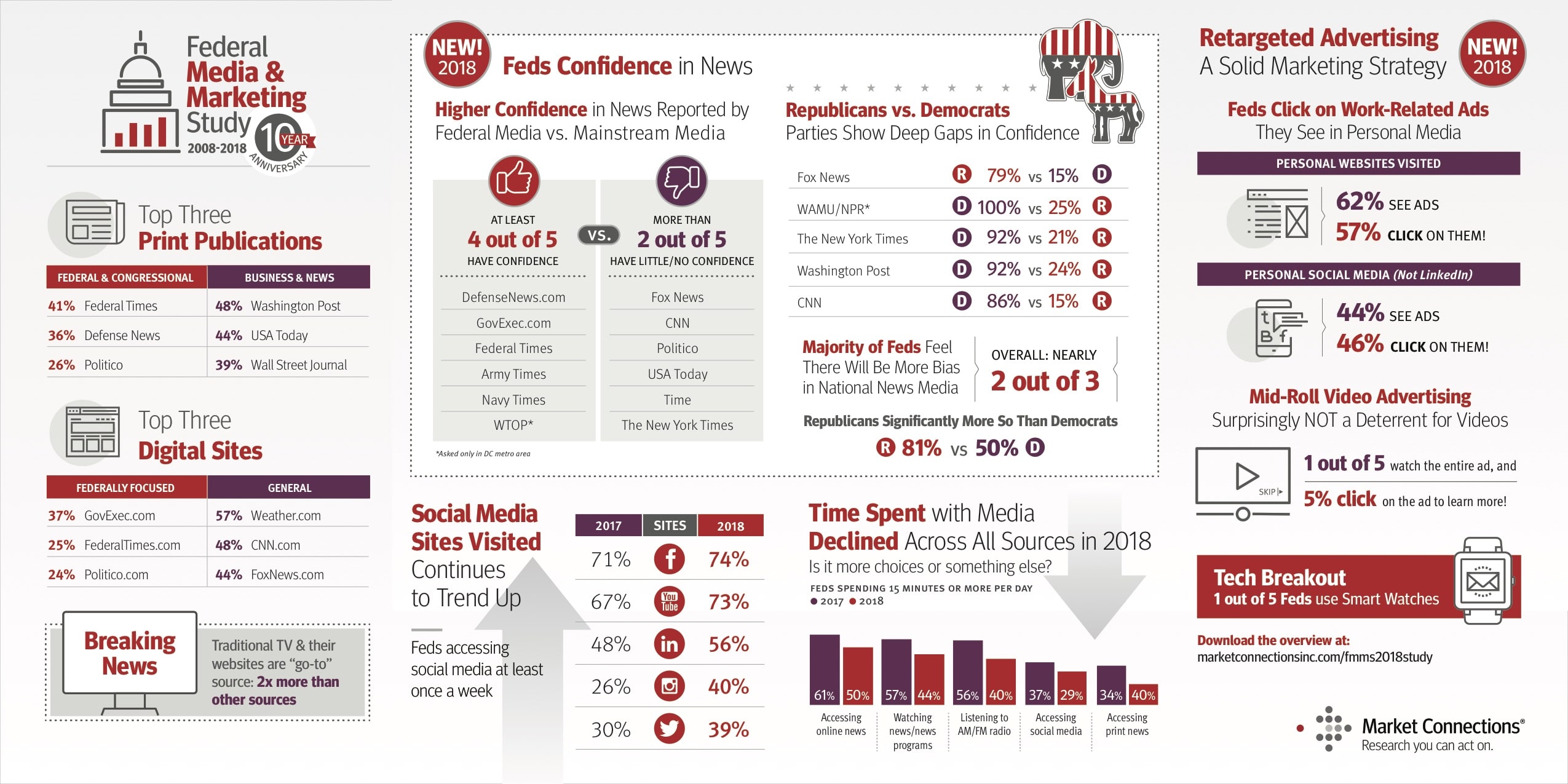The org’s new 2018 Federal Media and Marketing Study (FMMS) confirms that federal workers are wary of the news reported in some of the more mainstream, national media sources. Conversely, eight out of ten show a fair amount or great deal of confidence in federal and congressional sources Defense News, Government Executive, Federal Times, Army Times and Navy Times.
“While federal marketers need to be cognizant of co-mingling their brand with specific media sources, it’s important to balance the confidence level with audience reach,” said Aaron Heffron, president of Market Connections, in a news release. “Federally focused media outlets continue to be a trusted source of news and information, albeit with some limitations based on their reach and market focus. With all the noise about ‘fake news’ in this highly politicized environment, federal contractors may want to consider the halo effect of the earned and paid media placed with different sources.”
“However, in addition to audience reach and confidence level, federal marketers need to pay attention to their target audiences,” said study cofounder Sara Leiman, VP and media director of TMP Government, in the release. “Confidence levels vary by agency type, location, product category or political party affiliation. While overall numbers may be helpful, it’s important for marketers to look deeper, especially if they are focusing on agency-based marketing.”
Other highlights from the study include:
- Nearly two-thirds of respondents feel that national media’s coverage will be somewhat to a lot more biased in the future;
- Recommendations from peers and colleagues continues to be the top trusted source of information according to half of respondents, with an uptick for all sources aligned with professional associations including websites, white papers, case studies and webinars in 2018 from 2017;
- Across the board, social media usage has increased among federal decision makers, the largest percentage increase being Instagram up from 26 percent in 2017 to 40 percent in 2018, followed by Twitter with 39 percent in 2018 up from 30 percent in 2017.
See the complete findings here.
The survey represents the views of nearly 3,000 federal workers in a variety of positions. Market Connections aggregates the data and makes it available to federal marketers online. Clients use the data to assess changes in media consumption and identify preferences for print, television, radio, mobile, social media and Internet-based news media. Demographic, job function, and purchasing data allows for tactical media targeting and placements.









